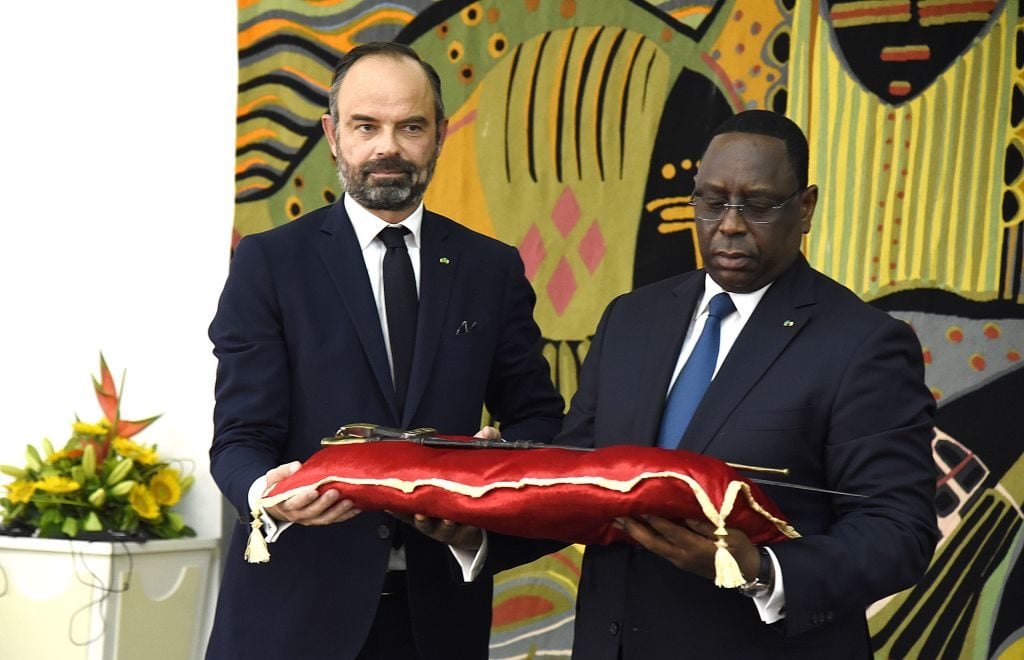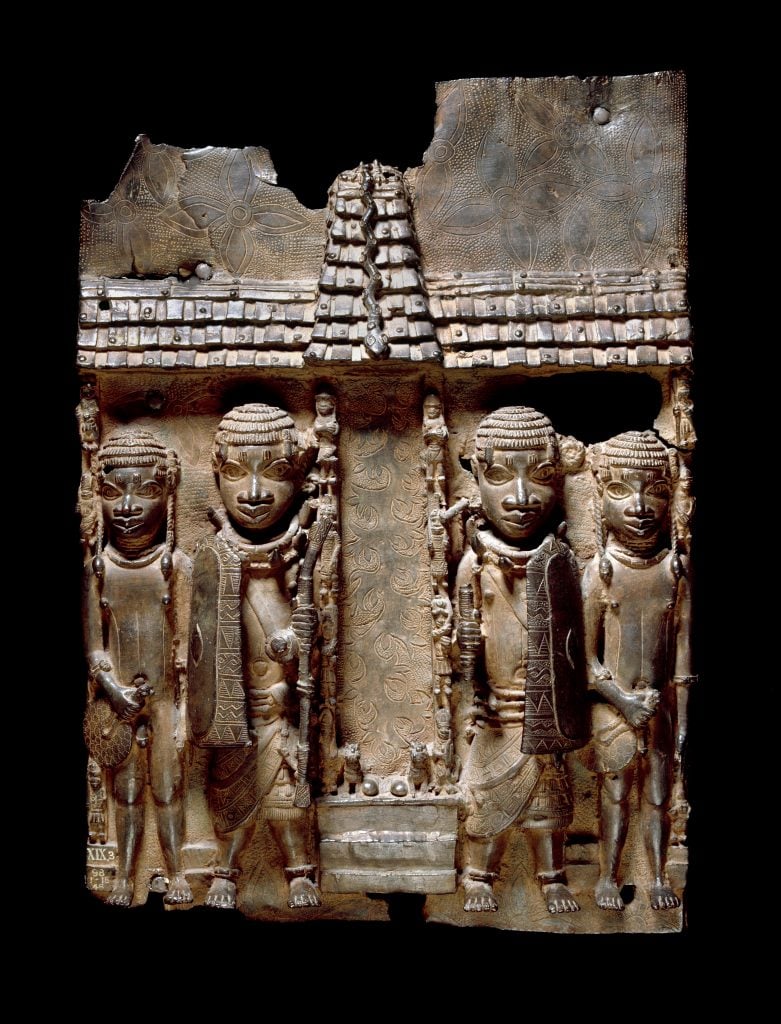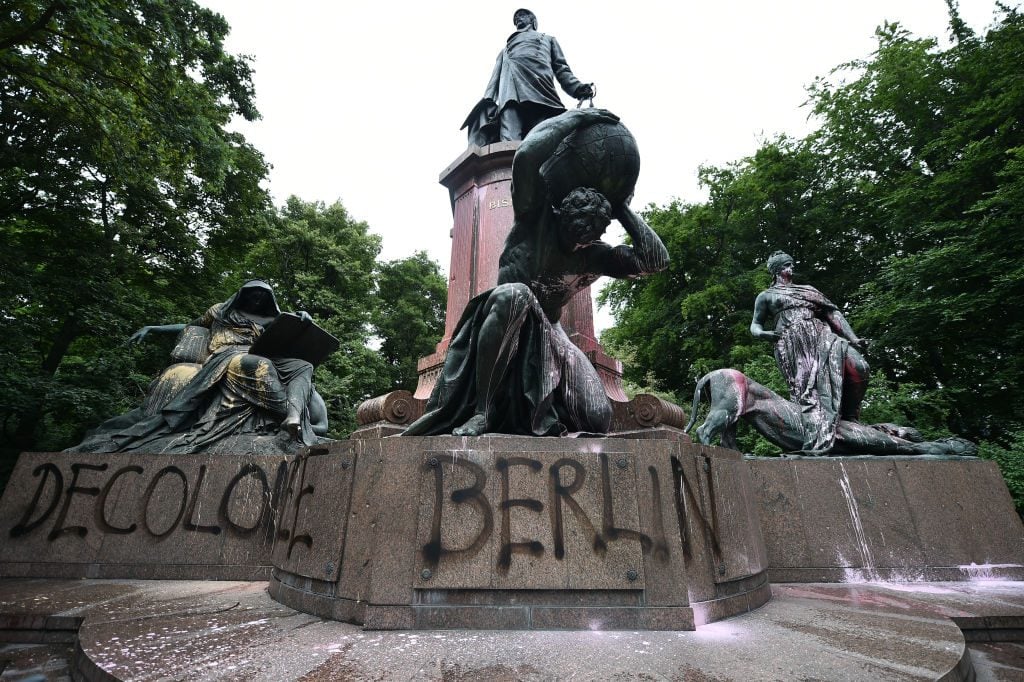Art World
European Museums Have Long Been Reluctant to Restitute African Heritage Objects. Changes in 2021 May Force Their Hands
Old laws and rigid sensibilities have prevented European museums from repatriating objects to their countries of origin.

Old laws and rigid sensibilities have prevented European museums from repatriating objects to their countries of origin.

Naomi Rea

Three years ago, the freshly inaugurated French President, Emmanuel Macron, took to a podium in the West African nation of Burkina Faso to make a historic announcement.
During his speech in the city of Ouagadougou, Macron promised to rebuild France’s relationship with the African continent, which has been deeply fraught due to the grisly legacy of French colonial exploits. His speech included a radical declaration: he promised to pave the way for the repatriation of African heritage that was unjustly held “prisoner” by French museums.
The speech sent shockwaves through European museums. If France, which had stalled for years on restitution, and which holds an estimated 90,000 objects from Sub-Saharan Africa in its national museums, was finally coming around, what would that mean for them?
Macron’s speech put an overnight end to decades-long debates in France over whether restitution was a good idea, and transformed the problem into a question of how repatriation should be carried out. Yet since Macron’s declaration—and despite the publication of a radical report advocating the permanent transfer of all African heritage taken without consent—France has not fully returned a single object.
But the ground is quickly shifting, and there are indications that 2021 may change the calculus in France and across the continent.

French President Emmanuel Macron upon his arrival in Accra on November 30, 2017. Photo by Ludovic Marin/AFP/Getty Images.
While several African nations have made formal requests for the return of objects from French national collections, and several French museums have committed to long-term loans to African partners, the full transfer of ownership has been a sticking point.
The problems stem from a 16th-century law that has long-guarded French national collections as the “inalienable” property of the state, making deaccessioning legally tricky.
But in November, French lawmakers finally and unanimously approved a bill sanctioning the full return of 26 objects from Paris’s Musée du quai Branly to Benin, as well as a sabre and a scabbard to Senegal, which were already on loan from the French Army Museum to the Museum of Black Civilizations in Dakar. Ownership of these objects will be officially transferred before the end of 2021.
The precedent is notable, but France has not yet introduced a general law sanctioning restitution. The bill originally proposed by the French Senate included the creation of a National Council that would advise on future claims received by French institutions, but the National Assembly later watered down the provision, adopting a case-by-case approach driven by the executive branch.
In effect, this considerably slows down the process of restitution, with each formal request requiring a specific Act of Parliament to be honored. Thus far, that would mean separate actions for around 13,000 objects originating from Ethiopia, Chad, Côte d’Ivoire, Mali, and Madagascar.
“France has made no progress on this issue,” Mwazulu Diyabanza, a restitution activist who has become known for his “activist diplomacy,” tells Artnet News.
“One exceptional law does not recognize the crimes [of colonialism], much less the right of disinherited peoples to dispose for themselves of their cultural heritage,” he says. For France to become a true example to the West, he says, it must first recognize its historical crimes and accept the principle of unconditional direct restitution.

Benin brass plaque (16th–17th century) showing Benin court officials flanking a palace entrance or altar. 2020 © Trustees of the British Museum.
By and large, institutions in the UK, which are also filled with objects acquired under British imperial rule, have been slow to react to the French approach. National institutions that hold African heritage, including the British Museum and the Victoria & Albert Museum, have often cited insurmountable legal hurdles to deaccessioning. Instead, their focus has been on contextualizing their displays and building relationships with museums across Africa.
The British Museum, for instance, is a member of the Benin Dialogue Group of international museum representatives and is working to establish a new museum in Benin City, Nigeria, to permanently display Benin works of art. It has promised to lend the museum some of its collection of 900 Benin bronzes, which were removed from the Kingdom of Benin by British forces in the 19th century.
But Alexander Herman, the assistant director of the Institute of Art and Law, tells Artnet News that legal restrictions in the UK on full deaccessioning are not actually as severe as they seem.
“Even UK national [museums] usually have certain exceptions to the rule against disposal: for instance, if the item is a duplicate, or is considered to be ‘unfit’ for the collection and can be removed without detriment to students or the public, or is useless by reason of damage or deterioration,” Herman says.
There is even historical precedent for repatriation. In the 1950s, the British Museum returned some 25 Benin Bronzes to Nigeria mistakenly thinking them to be “duplicates,” and sold or exchanged another 12 to private dealers and collectors between 1950 and 1972.
And there is little by way of statutory restriction stopping non-national museums in the UK from taking similar action, Herman says, noting that generally speaking, regional and university museums have “more liberty to deal with claims.”
“This is quite different from the situation in France, where the inalienability principle extends to all collections of public interest,” he says.
For the time being, many UK institutions are waiting for government guidance. In March, the Arts Council hired the Institute of Art and Law to create a set of restitution guidelines to help institutions assess claims on a case-by-case basis. Originally slated to be released in 2020, the guidelines are now expected in spring 2021.

“Decolonize Berlin” is sprayed on the Bismarck National Monument in Berlin which is smeared with paint. Photo by Sven Braun/picture alliance via Getty Images.
In Germany, civil society groups were campaigning for provenance research, museum transparency, and repatriation years before Macron’s statement. For the better part of a decade, activists have been rallying against plans to build the $700 million Humboldt Forum, a grand ethnological museum in Berlin scheduled to open before the end of the year. But the German cultural establishment has been reluctant to engage with their concerns.
Christian Kopp, the co-founder of the group Berlin Postkolonial, says that institutions reluctant to part with their collections of human remains and cultural objects are “playing for time” with “pretended transparency,” long-term provenance research, and a focus on international museum cooperations.
“Only a very small number of repatriations have actually taken place, and only in cases where the countries of origin have officially requested restitutions,” Kopp says.
Despite that, the German government has invested €2 million in provenance research, and has created a centralized authority to handle information requests about colonial-era objects in German museums, as well as the Agency for International Cooperation between museums.
“What is missing is a task force putting together lists and registers of human remains and objects, and proactively informing the communities of origin about their ancestors and objects shipped away under colonial regimes,” Kopp says.
Yet he remains confident that changing sensibilities will continue to put the screws to institutions.
“Though one should by no means underestimate the conservative forces, we are sure that the growing grassroots movements for global decolonization cannot be stopped anymore,” he says.
Even in nations that never had imperialist programs, such as Switzerland, the restitution movement has been inching forward. The Swiss cultural anthropologist and former deputy director of the University of Zurich’s Ethnographic Museum, Thomas Laely, says mores have changed radically in the past two years.
“Every museum with collections from colonial contexts feels affected and challenged, and a lot has happened,” Laely says, citing conferences, the establishment of working groups, and improved online access to international collections.
Whatever the stage of the debate, most experts agree that the movement has gathered an unstoppable momentum. And many now predict that, as we enter the third decade of the 21st century, we may also soon turn the page to a new chapter of this saga.